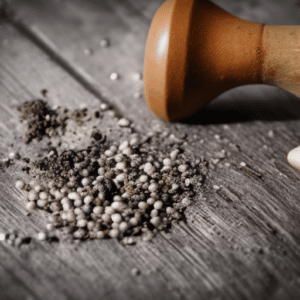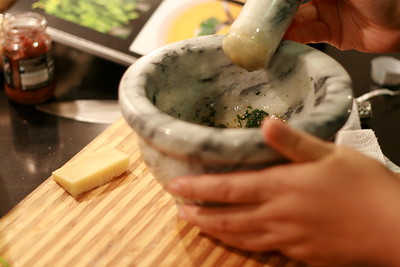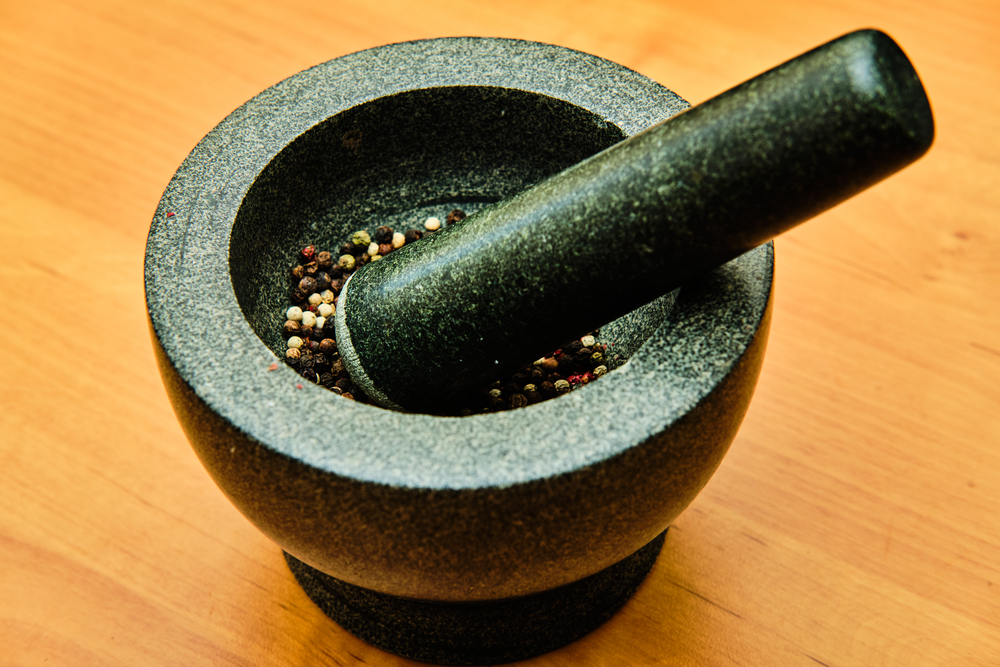A pestle and mortar are some of the oldest food preparation tools still used, effectively unchanged today. While they look pretty simple, how to use a pestle and mortar properly can be challenging unless you get some tips in advance.
We’re going to take you through picking your pestle and mortar, how to get it ready with the proper cleaning and seasoning, and how to use it. So whether you’re looking to use this traditional tool to crush, smash, grind, bash, muddle or mix seeds, whole spices, nuts, fresh herbs, or anything else into a paste or powder, we’ve got all the information you need.
Choosing Your Pestle and Mortar
When buying your first pestle and mortar, the vast range of sizes and materials can be pretty confusing. Here are some tips for choosing the right one.
Size
When you use your mortar and pestle, you shouldn’t be filling it more than one-third full with raw ingredients. So the capacity you need will depend on the size of the spice blends you’re going to be making.
As a guide, general-purpose mortars suitable for most people are between 6 and 8 inches in diameter.
Material
You’ll find a large variety of materials available, including glass, ceramic, porcelain, wood, stone, volcanic rock, and stainless steel. For most people, the best material is a heavy stone, such as marble or granite.
Wood is also a durable choice, but it is porous and can’t be used for tasks such as making oily pastes, where it will absorb the smell and aroma without cleaning carefully.
Ceramics can be used to grind even the hardest spices. However, they can be very delicate and easy to break.
Texture
Matte and relatively rough materials are the best choice.
Shape
It would be best to choose a mortar with a round, deep shape. The base should be wide enough to contain the ingredients as you work.
How Do You Prepare a Mortar and Pestle for the First Time?
You need to clean and season your mortar and pestle set before using it. Not only does this remove any particles from manufacturing and transportation and season the surfaces for use, but it’s also great practice for you.
Cleaning
Wash both the mortar and pestle with clean water and then air dry. It’s usually not a good idea to use soap or detergent as this can get absorbed and affect your grinds’ flavour.
Seasoning
When they’re completely dry, it’s time to season your mortar and pestle. You’ll do this by grinding up some white rice. This can remove odours, stains, and any particles.
Grind a small handful of white rice. Remember that you shouldn’t fill the mortar more than one-third full. It would be best to repeat this until the ground rice stays white. Typically this means discarding and repeating about three times.
After you’re done with the rice, it’s time to season with your first spice mix. Empty the bowl and mash four garlic cloves together and then grind the following spices together:
- One teaspoon cumin
- One teaspoon salt
- One teaspoon pepper
Once you’ve mixed this into a paste, discard it and wash the pestle and mortar with a scrubbing brush and freshwater. Leave them to dry, and they are ready to use.
Techniques for Using a Mortar and Pestle
There are two ways to use your mortar and pestle, and in most cases, you’ll be using them together. Hold the pestle in your dominant hand with a firm but a comfortable grip, and keep the mortar bowl steady with the other.
Bashing and Pounding
Once your ingredients are in the mortar, it’s a good idea to put one hand slightly over the opening to prevent anything from bouncing out. Use the pestle in an up and down motion to smash and crush the contents.
Muddling and Grinding
This is a mixing motion that uses the weight of the pestle to grind and crush the ingredients. Hold the mortar with firm pressure with one hand and stir the pestle in a circle against the base and sides. This motion is used to make a finer grind or for anything involving liquids.
Grinding Spices and Spice Seeds
With practice, you’ll use both techniques together and can readily make spice blends from coarse to fine powder grades.
Start by gently muddling the spice seeds to grind up the hard outer shells. Then bash up to ten times with the rounded end before muddling again. Continue alternating between the two techniques until you’ve reached your preferred consistency.
Fresh Herbs
When starting with fresh herbs, you’ll want to bash and crush them to squeeze out the liquid and essential oils into a paste.
Mixing in the Right Order
Add your ingredients separately in stages. Bash and muddle as needed, and then add the next set. As a general rule, you should follow this grinding order:
- Dry ingredients, including spices, flour, and dried herbs
- Moist ingredients like onion, garlic, and fresh herbs
- Oily ingredients such as oils, nuts, cheese, butter, and anchovy
- Wet ingredients and any other ingredients, including vinegar, stock, lemon juice, honey, and soy
- Taste and season with salt and pepper as needed
What Can You Use a Pestle and Mortar For?

There is a massive range of pestle and mortar uses in your kitchen. Grinding and bashing the ingredients the natural way for yourself lets you create food with the most intense flavours as you release the natural oils from spices and herbs at a fine consistency with more control than a food processor.
You can use your mortar and pestle in your cooking for crushing garlic and grinding almost any kind of whole spices, corn, fresh herbs and herb seeds, plant seeds, leaves, and nuts. You can produce exciting spice powder mixes, sauces, marinades, curry pastes, dressings, flavoured oils and pestos. It’s even possible to start grinding your own herbal preparations, including herbal tea, poultices, lotions and creams.
Favourite blends to try also include using your mortar and pestle to make the best caesar dressing you’ll ever have. Your trusty pestle and mortar will bring your cooking tastes and aromas that you can’t find in pre-prepared food bends from the supermarket.
Pestle and Mortar Recipes to Practice
We’ve looked at ways to use a pestle and mortar, and now it’s time for some simple recipes to try out.
Simple Fish and Meat Marinade
Bash together a few pieces of lemon zest and the leaves from a couple of sprigs of rosemary that’s been briefly blanched in hot water. Add some garlic cloves and continue to bash and muddle together. Mix in olive oil and muddle together until it’s reached the desired consistency. Add a little lemon juice and salt and pepper.
Basil Salad Dressing
Bash basil leaves for about ten seconds and then muddle until they start to turn into a paste. Add olive oil and continue to stir before mixing in some balsamic vinegar to make a simple yet full of flavour salad dressing.
Cleaning and Storing Your Pestle and Mortar

After you’re done grinding with your mortar and pestle, you need to clean it. If you’ve only made a dry grind, it may be sufficient to wipe clean with a clean paper towel.
Some designs are listed as dishwasher safe, but it is generally best to hand wash with warm water. Remember not to use soap or detergent as this might leave a taste residue. You can use a clean scrubbing brush to get spices or pastes out of the grain or texture of the mortar.
If you do get a funny taste or stains, you can repeat the dry rice grind you did when you first got your set.
After washing, dry a little with a clean paper towel and then air dry. Store the set carefully in a cupboard.
Use Your Pestle and Mortar the Right Way
As we’ve looked at how to use a pestle and mortar, we’ve seen that they are fantastic kitchen tools that can dramatically enhance your cooking.
Take the time to prepare your pestle and mortar before using it and practice the different techniques. Don’t be afraid to experiment with ingredients, and you’ll soon be coming up with fantastic recipe ideas for yourself.

